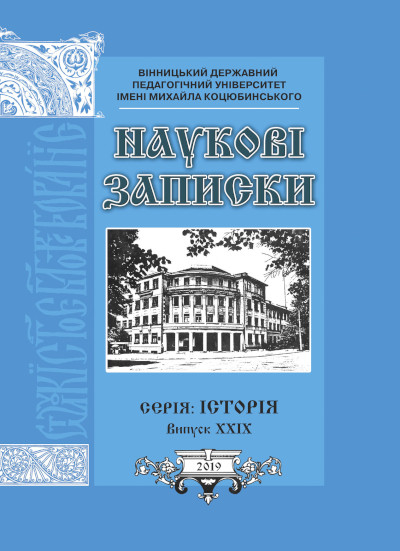Abstract
Based on research of the “Podillian Diocesan News”, a number of issues of the everyday life of clergy in Podillian are investigated such as: social, legal and financial situation of the clergy; official duties and public obligations of priests; economic activity and land management; state maintenance of priests and their families; relations with different social strata of the citizens in Podillia in the second half of the XIX – the beginning of the XX centuries.
During this period on the Ukrainian lands under the pressure of Russian autocracy, the Orthodox clergy went from spiritual mentors of the Orthodox people to a privileged social status regulated not only by professional activity, but also by everyday life. The election of the parish clergy was reduced to formalism, and then it was eliminated. Moreover, a system of encouragement and state awards to the saints and clerics was implemented. The characterization of the Orthodox clergy of the diocese of Podillia (number, social origin, nationality) was shown in the “Podillian Diocesan News”. Practical non-church activities of the clergy included medical care for citizens, struggle to raise the level of public morality (anti-alcohol campaign), sharing the best agricultural practice, and development of elementary education.
The Orthodox clergy’s financial and living conditions in the diocese of Podolia were regulated by law, the rural clergy’s welfare was increased, but the church ultimately obeyed the state authorities. In addition to state maintenance, the clergy were financed with the parishioners’ money and income taxes. The everyday economic activity of the rural priesthood, due to the peculiarities of the social position of the parish pastors as well as the way of their domestic and family life, was closely linked to land use.




